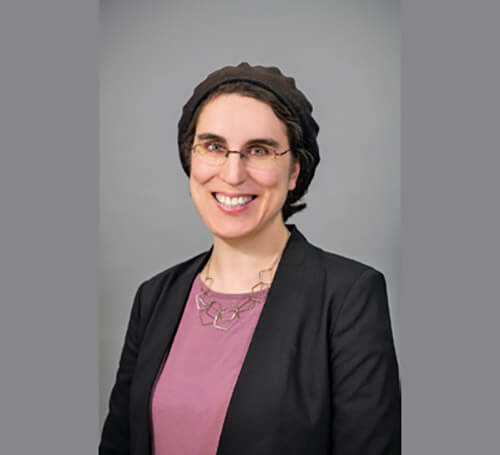
Those following the custom to study a chapter of Pirkei Avot every week between Pesach and Shavuot have a window this week into the beit midrash of Rabban Yochanan ben Zakai. Pirkei Avot is organized according to the chain of tradition, with students cited after their teachers. But when it comes to Rabban Yochanan ben Zakkai, the mishnayot open up not just a list of teachers, students, and their famous sayings, but the interactions between teacher and students as well.
According to the Mishnah (Avot 2:8), Rabban Yochanan ben Zakkai had five (main) students: Rabbi Eliezer ben Horkenos, Rabbi Yehoshua ben Chananya, Rabbi Yosi the Priest, Rabbi Shimon ben Netanel, and Rabbi Elazar ben Arach. The first and the last take on outsized importance.
The first thing the Mishnah tells us about the relationship between teacher and students is that Rabban Yochanan ben Zakai had a catchphrase to praise each student: “Rabbi Eliezer ben Horkenos is a pit covered in plaster (bor sid) that does not lose a drop,” whereas “Rabbi Elazar ben Arach is an ever-strengthening fountain (ma’ayan ha-mitgaber).” Rabbi Eliezer was a stickler for tradition, a reputation that is borne out by many other stories in which he appears. He collected all of the knowledge of his own teachers and preserved it without losing any details; he innovated nothing of his own. Where Rabbi Eliezer was a still, passive receptacle, Rabbi Elazar ben Arach was a strengthening spring that generates new knowledge, churning with creativity.
Our tradition rests on both preservation (Rabbi Eliezer) and creativity (Rabbi Elazar ben Arach), but if Rabban Yochanan ben Zakai had had to choose one, which would it have been? Rabban Yochanan ben Zakai lived through the immense and rapid changes wrought on the Torah community by the destruction of the Beit Hamikdash. Would he have preferred Rabbi Eliezer, who could help collect and preserve the shattered pieces of the tradition? Or Rabbi Elazar ben Arach, who could help reform it anew?
The Mishnah, in fact, records a disagreement as to which student Rabban Yochanan ben Zakai saw as his greatest. Avot 2:8 initially says that according to Rabban Yochanan ben Zakai, Rabbi Eliezer alone could outweigh all the other sages in a cosmic balance. But then the mishnah goes on to cite Abba Shaul, who says that the weighty student was in fact Rabbi Elazar ben Arach.
The disagreement is unresolved, but the continuation of the mishnayot seems to support Abba Shaul. Rabban Yochanan ben Zakai sends his students on missions to identify the good and bad paths in life (Avot 2:9), and each time approves of Rabbi Elazar ben Arach’s answers above the other rabbis.’ The Mishnah seems, then, to favor Rabbi Elazar ben Arach, even without saying so outright. After the Churban, the Jewish people needed forceful, creative leaders, bursting with energy like a strengthening spring.
This may be how the Mishnah leaves it, but the story does not actually end there. Rabbi Eliezer ben Horkenos was one of the principal sages of his time, with a reach far beyond that of Rabbi Elazar ben Arach. In the Mishnah, “stam Rabbi Eliezer,” Rabbi Eliezer with no additional biographical information, refers to Rabbi Eliezer ben Horkenos; “stam Rabbi Elazar,” in contrast, is not ben Arach (rather it is Rabbi Elazar ben Shammua). Rabbi Elazar ben Arach, indeed, is never mentioned by name in the rest of the Mishnah!
Rabbi Elazar ben Arach’s relative disappearance is explained, indirectly, by a story on Shabbat 147b:
“Rabbi Elazar ben Arach happened upon [Deyomset, a place with high-quality waters]. He was drawn after [the waters, and stayed there]. His learning was uprooted. When he returned he came and got up to read from a sefer Torah. He should have read ‘This month is for you… (Hachodesh ha-zeh lachem)’; he said ‘Their heart is mute (hacharesh hayah libam).’ The rabbis asked for mercy on his behalf and his learning returned.”
The great Rabbi Elazar ben Arach had fallen so far that he misread the first mitzvah in the Torah, confusing one letter in each word to deliver an entirely different meaning! Did Rabbi Elazar’s zeal for newness and creativity drive him away from his colleagues in search of ever-sweeter “water”? Is this story criticizing his creative approach in favor of the conservatism of Rabbi Eliezer?
The Imrei Emes, R. Avraham Mordechai Alter of Gur (1866-1948), has a fascinating approach that in fact suggests the opposite. Commenting on Parshat Hachodesh, he explains that renewal and newness are essential to the mission of Jews in the world. The mitzvah of hachodesh, which connects to hitchadshut (renewal), means that without Torah we would be stuck in the physical world and its routines. The Torah, instead, asks us to renew our approach to Torah and God regularly. The month renews every 30 days to remind us that even in our religious lives we should not get stuck in routines. Torah and mitzvot, according to the Imrei Emes, should raise us above the natural world and help us raise it with us—something that becomes impossible if observance itself becomes, in his words, “second nature.”
Rabbi Elazar ben Arach, the ever-strengthening fountain, understood this well, which is why he was a font of creativity. He understood it, that is, until he didn’t. Rabbi Elazar was eventually drawn in by sweet waters that represent the comforts of the physical world. Hachodesh, the innovation that is the heart of Torah, and hacharesh, the blockage that is routine, can slip into each other before you notice: just remove the small edge of the letter dalet and it becomes a resh.
Despite the dangers inherent in Rabbi Elazar ben Arach’s power of innovation (chidush), his colleagues prayed for him and welcomed him back to their fold. Both cistern and spring are necessary, but neither is sufficient on its own.
By Miriam Gedwiser
Miriam Gedwiser teaches Talmud and Tanach at the Ramaz Upper School and is on the faculty of the Drisha Kollel, an immersive summer learning experience for college students and recent graduates. She lives in Teaneck with her family.











